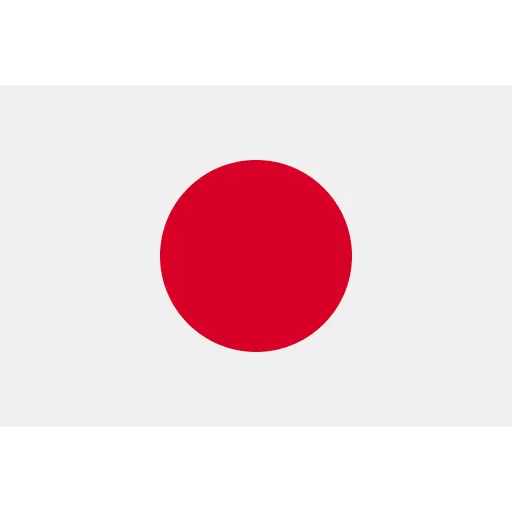5 day trips from Tokyo
Are you looking for sights outside the Japanese capital? In case you get tired of seeing skyscraper after skyscraper in Tōkyō, here are a handful of ideas for where you can go in just 1-2 hours by bus or train. There are many nice excursion destinations for one-day trips in the Kantō area, which is the eastern part of the main island of Honshū. You can also choose to spend a few days with an overnight stay in these cities with historical sights, lavishly beautiful natural areas and self-indulgence. In any case, we have put together our top 5 ideas for your next trip from Tōkyō. Enjoy!

(https://unsplash.com/photos/jmLi0D6MBGw)
1. Kamakura and Enoshima
The small coastal town of Kamakura, which used to be Japan's political seat (yes, one of many), is less than an hour's drive from Tōkyō. It is a true historical gem in the style of Kyōtō with its Buddhist temples, Shinto shrines and historical monuments. Close to the city's coast is the island of Enoshima, which is also worth a visit. Regarding transport, I would recommend here that you buy an Odakyū Enoshima-Kamakura Freepass , so that you can travel between the company's Odakyū stations in Kamakura and to Enoshima.
You can take the JR Yokosuka Line directly from Tōkyo Station to Kamakura Station if you choose to start your trip out in the city of Kamakura. There is a calm atmosphere here in the city, despite the many tourists. From the station there is a nice shopping street with restaurants on the way up to the great Hachimangu shrine . The shrine is considered one of Kamakura's most important shrines and is a must see . If you go further east, you will find Hokokuji Temple , which is known for its small bamboo forest. In the eastern area here, there are also various fine hiking trails for the fresh tourist.
You will also find hiking trails in the northern and western parts of the city, such as Daibutsu Hiking Trail. The path here is named after one of the city's best-known tourist magnets, the large, beautiful bronze statue Great Buddha of Kamakura , which is 11.4 m high. The Daibutsu statue is located close to Hase Station. Nearby is also the temple of Hasedera with an associated museum. If you want to see temples and shrines for the big gold medal, there are many more than those mentioned. When I visited the area myself, I was only here for a single day, but if you want to see all the temples, you probably need to spend a few more days in the city.
When you are around Kamakura, as I said, don't miss out on a trip to the island of Enoshima . Take a train to Katase-Enoshima Station. From here you can go out to the island via a bridge. Go up the stairs to Enoshima Shrine , where you are guaranteed a great view (see my photos below). There are also attractions such as a lookout tower, caves and green park areas.
In addition to the beautiful monuments, Kamakura and Enoshima are also known for their sandy beaches , which the Japanese flock to in the summer or at the first sunrise of the new year over Enoshima. On the island you will find stalls with Enoshima specialties. One of these is the small and almost transparent fish with small black eyes, shirasu , which can be found in, among other things, burgers and soft ice. Try it. Just don't look at those little eyes :-)


2. Mt. Takao
If you are looking for a quick get-away destination and sweat on your forehead, then you should consider Mt. Takao, which is a little under an hour outside Tokyo's Shinjuku. The ticket costs only ¥390 (just over DKK 20), and it really is a beautiful trip with a view of mountains and rice fields. The 599 m sacred mountain with its various hiking routes is a favorite among the Japanese, and in spring and autumn, nature and especially the trees show their most beautiful sides. If you take the train from Shinjuku in the morning to climb the mountain, you can be back in the evening, so it's a nice day trip from the hustle and bustle of the city.
When you arrive at Takaosanguchi Station at the foot of Takaosan, in addition to buying snacks, drinks or accessories for your hike, you can visit the Takao 599 Museum , where you can learn more about the mountain's ecosystem. There are also hot springs at Keio Takaosan Onsen Gokurakuyu , but perhaps you'd rather save this lovely experience for after your hike on the mountain, when your body is well used.
Takaosan has six different paths that you can follow up to the top observation deck. If you want to avoid walking all the way, you can take the lift or cable car the first part up to the observation point halfway up the mountain. There is also a park with monkeys here and wild flowers.
Further up the mountain a little before the summit you will find the rustic Buddhist and Shinto temple Yakuoin , which has been used for more than 1,000 years to pray to the tengu gods (those with the long noses) for good luck. There is therefore much to see on the way up the almost 600 km. high mountain. Enjoy a nice cold ice cream and take a picture at the monument at the top to immortalize your trip to Tōykō's beautiful mountain.


(https://unsplash.com/photos/H4hfkUue_KM + https://unsplash.com/photos/x-1B-nw1WFA)
3. Kawaguchiko
At Japan's highest mountain, Mt. Fuji (3,776 m), are the five Fuji lakes, Fujigoko . The longest of the five lakes is Kawaguchiko, and here lies a cozy town with the same name. The place is known for its onsen (hot springs) and ryokan (traditional inn/hotel), but the area is also a popular destination for fishing, hiking or camping.
I would highly recommend a two-day trip with an overnight stay at a traditional ryōkan while here. I can personally recommend the Ōike Hotel , where there was an onsen with a view of Fuji and real Japanese sukiyaki and kaiseki -meal with many dishes. Finally, don't cheat yourself for a night at a ryokan in a tatami-covered room on a futon in a delicious cotton yukata. A truly wonderful experience! And then there was the hotel bus, which picked one up at the station. I have written a bit about onsen in general in my guide to the city of Kobe, which you can read here if you want to know more.
The nature in this lush area is absolutely fantastic, and in addition to autumn's beautiful momiji autumn leaves and spring's pink cherry blossoms, in the summer in parks such as Oishi Park you can experience the lavender flowers in full bloom for e.g. Kawaguchiko Herb Festival . Like all other tourist-attracting places in Japan, there are small stalls with snacks, soaps and other interesting things, but there is not an exaggerated tourist-like atmosphere here like many places in Tōkyō.
Don't miss Iyashi no Sato , a small open-air museum focusing on local crafts. I recommend renting a car to get there as it is located on one of Fuji's other lakes, Saiko. I have written a little bit about transport in a previous post about tips for your first trip to Japan here . It takes approx. 40 minutes by car, but it only costs ¥350 (about DKK 20) to enter and learn more about traditional crafts such as pottery and weaving. On your way back around the lake towards the station, you can visit the beautiful shrine, Asama J inja , which due to its location is not wildly full of tourists.
If it needs to be much wilder with temples and onsen , the amusement park Fuji Q-Highland with some pretty crazy rides is located close to Fuji's lakes. Many highway buses stop at both the theme park and Kawaguchiko, so getting to this area is not difficult. Take the train or a direct bus from e.g. Shinjuku or Shibuya to Kawaguchiko Station. It costs approx. ¥2,000 (approx. DKK 115). A lovely area perfect for a wellness trip away from Tokyo.


4. Hakone
About a two-hour drive from Tōkyō, the beautiful city and national park of Hakone is located in a mountainous area not far from Mt. Fuji. Due to the thermal activity just like in Kawaguchiko, Hakone is enriched with hundreds of onsen such as Tenzan. There are many onsen in different areas of the city such as in Yumoto that it might take a little research to find just the right place. Eg. Yunessun offers guests to bathe in red wine . Yes, there is a first time for everything ;-)
If you want to see the hot springs in action, in the Owakudani area you can experience sulfur fumes and see the hot springs and streams bubbling and steaming. The area, located around the crater of Mt. Hakone in an active volcanic zone, which fortunately has not been active for thousands of years. Here in the area, you can buy eggs to boil in the naturally warm water, which turns black. You might also be lucky enough to spot Mt. Fuji.
Transport around the more rural areas of Japan can be a bit difficult, and alternatively you can take a guided bus tour with English speaking guides from the center of Tōkyō, in Shinjuku. An easy and cheap alternative. Otherwise, there are buses and trains from the same place in Tōkyō. When traveling in Hakone, consider getting a Hakone Freepass , which allows free access to Odakyū's transportation in a certain area. There are also other things in Hakone than onsen .
If you are interested in art, there is the Hakone Open Air Museum with outdoor sculptures by both Japanese and international artists. Here, the museum has tried to maintain a harmonious balance between nature and art with the beautiful mountains around. If you haven't tired of temples and shrines yet, you should visit Hakone Jinja Shrine. It is one of Hakone's most famous shrines with one of its huge torii out in Lake Ashi (also called Ashinoko).
If you are more into castles, Odawara Castle is located on the coast in the city of Odawara not far from Hakone. If we stay in the historical corner, you can experience the Old Tokaido and Hakone Checkpoint , which used to be a checkpoint for traffic on the route between Tōkyō and Kyōto in the 17th century. The checkpoint has been reconstructed and you can walk part of the stretch around Hakone. There is both wellness and history in beautiful Hakone.


(https://unsplash.com/photos/5v7jux4wZWI + https://unsplash.com/photos/CmMm7wWb6J8)
5. Yokohama
The port city of Yokohama has almost become a part of Tōkyō with its more than 3.5 million residents. inhabitants of the city itself. About 30 minutes from Tōkyō, you'll find a popular haven with a nice European-style harbor area, which, like the city of Kobe, was one of the first ports to open to foreign trade in the latter half of the 19th century.
At the city's new harborside center, Minato Mirai , you'll find the Landmark Tower and the Cosmo World amusement park with its huge Ferris wheel. It is quite free to walk around the theme park, but it costs money to try the rides. At the port, you can also see the retired ship Nippon Maru or take a trip to the Yokohama Port Museum to learn more about seafaring. There are a few shopping centers in the area here, and if you go further out on the large harbor island you will come across red brick warehouses from when the harbor was used here. Now the premises are used by independent traders with small shops and stalls inside.
On the same harbor island is the Cup Noodles Museum , which is a really nice museum. Here you can interactively learn about the history of the cup noodle, try different types of noodle dishes from Asia in the Noodles Bazar Food Court or design your very own cup noodle. A really fun museum! If you haven't had enough of noodles, I recommend a trip to the Shin-Yokohama Ramen Museum , which is an indoor constructed retro museum. You feel like you have taken a time machine back to 1950s Japan, where you can buy traditional Japanese sweets and try different types of ramen. A nostalgic paradise for every ramen lover!
You can of course also get to see Yokohama from above, and you can do that in the Sky Garden Observatory for ¥1,000 (approx. DKK 57). In Yokohama, there are also quite a few museums and the Sankeien Garden , which is a traditional garden with a lake and stream. Yohohama also has the largest of Japan's three Chinatowns with the colorful Kanteibyo temple in the center of the district. There is plenty to do in this modern Japanese metropolis.


Those were a few ideas for what you can do within a short distance of Tōkyō. If you have more ideas for day trips in the Kantō area, please leave a comment here so we can share our experiences of traveling in Japan. See you, mata nee !
Also read: The ultimate guide to Tōkyō .






